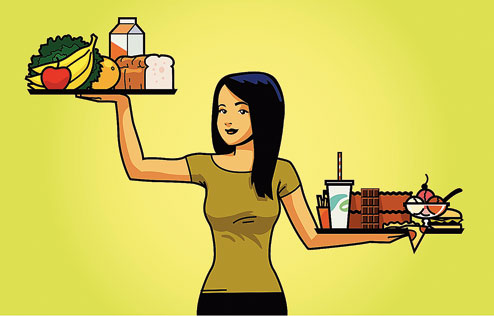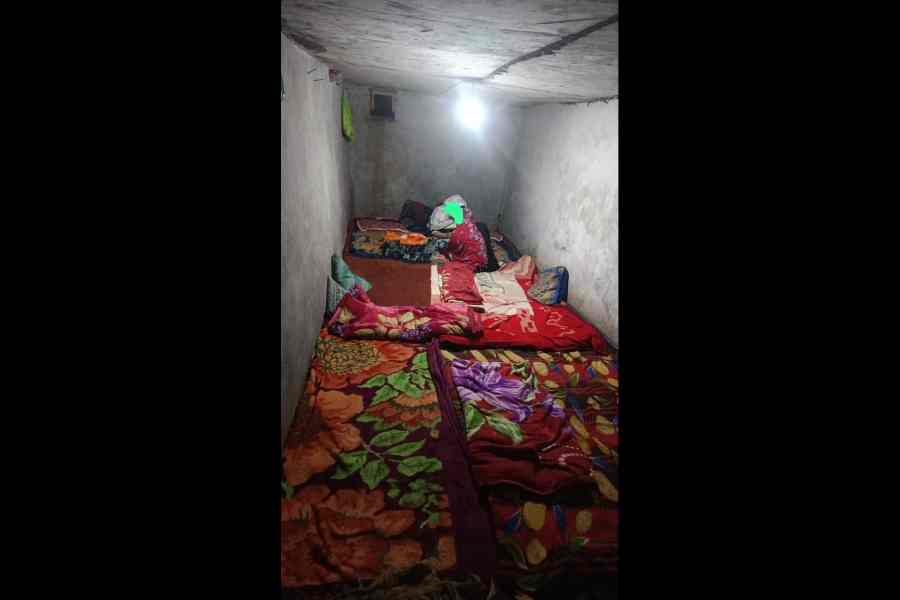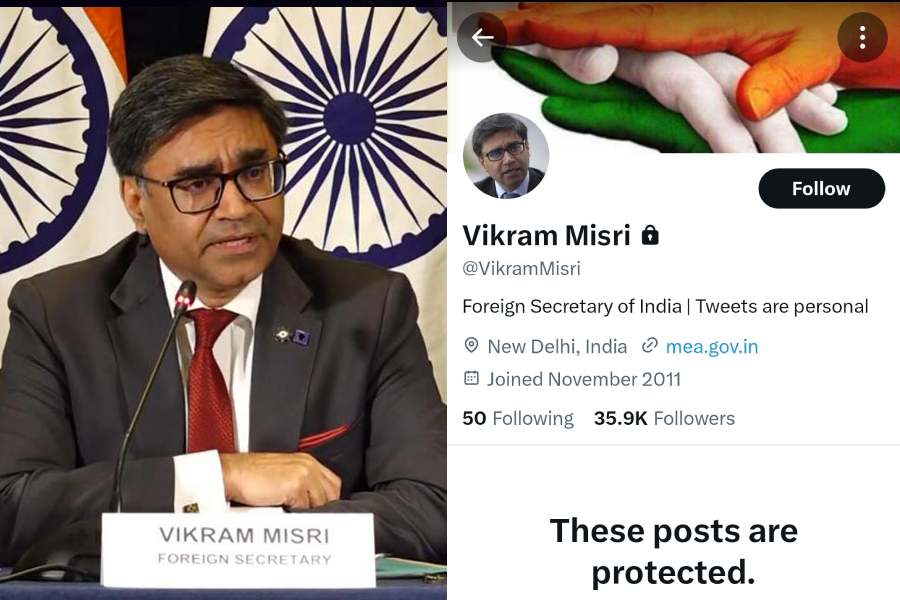
I have a confession. When I went to meet Rujuta Diwekar at Starmark South City for the launch of The PCOD-Thyroid Book (Westland Books, Rs 200), I went armed not only with health questions but also a bunch of starry questions. Why? Because Rujuta is the woman behind Kareena Kapoor’s fab weight loss and she’s worked with so many Bolly bods! But once Rujuta started talking about eating and sleeping and ghee and dahi, this stuff seemed far more important than the stars I wanted to quiz her about. So here is a non-starry but five-star interview with nutritionist Rujuta Diwekar.
We loved your concept of ‘don’t lose weight, gain health’…
See, what we need to understand is that till now there has been too much focus on total body weight and that’s exactly why the world is still fat. Most of us have been on diet after diet but all that it has done to us is that today we are much fatter than when we went on our very first diet. And the reason is we have consistently lost our lean body weight.
Lean body weight is the weight of our bones and muscles. It is the bones and muscles which keep us metabolically healthy.
It is the bones and muscles also that are metabolically active as tissues. And it is bones and muscles that respond beautifully to eating local food, to exercising, to sleeping on time. And once we shift our focus to making long-lasting, sustainable changes in our lifestyle, versus just losing weight, then we lose weight in an irreversible fashion. If you lose weight but you lose health with it, you get acidic, you are irritable, you cannot sleep at night, then how is that weight loss even going to serve you?
Whoever thought sleep was so important to weight loss...
Sleeping is the most underrated aspect of losing weight. It is very important to not just sleep in the night but even the afternoon is critical. A nap of about 20-30 minutes can really rejuvenate us. It almost makes us accomplish double the things in one day because you can return to the second half with renewed energy.
Sleep also helps us settle our hormones. A bad night’s sleep is, in fact, associated with the risk of developing diabetes. You know we are turning into the diabetes capital of the world. And the reason is because a lot of us are not sleeping well. It’s become routine for Indians to watch TV till the last minute before they go to bed. Some people even have a TV inside the bedroom. And if it’s not the TV, it’s the phone. Till the last minute you’re on a gadget. So our sleep quality is going down… I suggest all my clients to keep away from the phone and TV an hour prior to going to bed. If an hour is not possible, at least 30 minutes.

For this book, why did you focus on PCOD and thyroid?
These have unfortunately become like an epidemic. Every third girl seems to have a PCOD and thyroid problem. Every girl that is getting affected today is educated, but is clueless about what this means. I feel that as intelligent women, if we just understand PCOD and thyroid better, then we will not be scared of our hormones. We will not end up thinking, ‘Oh god, now that I have this issue, I will not be able to lose weight or get pregnant, or I will get diabetes or heart diseases.’
This book is an attempt to create awareness about leading a good lifestyle because a good lifestyle is critical to good hormonal balance and once our hormones are in a state of balance, we also feel much healthier, younger, energetic.
You’ve said in the book that one of your clients who moved to a more balanced lifestyle was able to give up her meds. Is that possible with PCOD and thyroid?
Among my clients, everyone is able to bring down their dosage dramatically and the ones who’ve been good with their lifestyle have been able to completely give them up.
Many women have fibroids. Can a healthy lifestyle make a difference to that too?
Yes, yes… fibroids, endometriosis, cysts, PCOD… they all come out of insulin-resistance. And our lifestyle can address that issue. That’s why you’ll see a lot of our girls get fat suddenly in the 10th or 12th standard. Or when they get a job, within one year they are five kilos heavier. In one year they didn’t start eating double the amount, it’s just that the lifestyle changed. Lunches got delayed, too many teas and coffees happening, you have more money so you are eating out more often….
Honestly, our food, our exercise, our lifestyle need to become a part of our curriculum. We should be taught early, in school, so that we don’t fall for fads and fall prey to all the marketing of the weight loss industry. Because every day they want you to eat something or the other… and this something is always what you’ve never had, it’s never been made in your home. So we’re just opening packets and eating and that’s how we are getting fat.
One of my next projects is a book on children. At the root of a healthy lifestyle is maintaining diversity. We shouldn’t have a world where from Kashmir to Kanyakumari we have children who are eating cereal and Chocos for breakfast.
We do need the South Indians eating idli, we do need the Punjabis eating the parathas... because that’s a good way not just to keep the health of the body but also the health of the local economies and ecology of the world at large.
Why do you write only for women? Aren’t men interested in losing weight and looking good?
They are, but you know, we women discriminate against our bodies so much! You put a 40-year-old woman in a lift — every lift has a mirror — and she looks at herself and looks at faults. She finds something that needs to go, something that needs to change. You put a man in there and he’s going to check himself out and think, ‘How good am I looking?!’
Look at our beaches. Men in their underwear and big paunches out are having a good time. But women somehow feel, ‘If I lose two more kilos, then I will be happy.’
We have to accept ourselves a little more. So I think women need more attention when it comes to their health and fitness, because, see, no one looks after the women, especially working women. Everyone is looking after the working man — the wife, the daughter, the mother. The working woman is on her own.
Your book says ghee is a ‘beautiful weight-loss aid’ and sugar is ‘amrit’. What’s happening?!
(Laughs out loud) What is the Vedic paanch amrit? In yoga and ayurveda, among the paanch amrits are all of the milk products — dahi, ghee, milk — and sugar and honey. If you are in South India, instead of honey, there is banana.
But isn’t sugar supposed to be the biggest villain, in all diets?!
Yes, yes. But that is only because of the amount of food that we are consuming that has hidden sugar. If you ask any dietician, ‘Can I eat a Marie biscuit?’ they will say yes. But if you see the ad, they say something like ‘Har bite mein fibre.’
So we are thinking, ‘oh it has fibre!’ But that ‘har bite’ also has sugar. If you go to a burger place, you get cola… and packaged sauces… everything has sugar. And that’s the kind of sugar we have to avoid.
Sugar is not the only problem with packaged foods, there’s preservatives, there’s emulsifiers, there’s poor ingredients, replacement of actual food with chemicals that have begun to taste like food.
The sugar that we use in our homes, like at night if you have milk and you add sugar to it, or you have chai and coffee, or if you’ve made halwa or kheer or you want to have a sandesh, none of that is a problem… because of the way the sugar comes. It’s important not to see sugar as the problem, you have to see packaged food as the problem.
What about ghee? We’ve been told that any fat that is in liquid form at room temperature is okay and any fat that is solid at that temperature is not good...
Ghee is liquid in summer, solid in winter (smiles). Ghee cannot be categorised as just a normal fat. It is the highest grade of fat that is available. The process of making ghee from milk is actually the work of a genius. The first person who made it should have got a Nobel Prize (laughs)!
Ghee is an excellent fat. It is a very unique kind of fatty acid molecule. The more ghee you eat, the thinner you get. And that’s exactly why traditionally in India a post-pregnancy diet always had a woman overloading on ghee, because it allowed you to come back in shape very quickly.
You currently look at India, almost everyone seems to have a Vitamin D deficiency. Why, when we have so much sunlight? Because we are not eating good fat, we are not eating essential fats like white butter that we make at home, dahi that we make at home, ghee that we make at home. And because we are not consuming these essential fats, we are unable to assimilate fat-soluble vitamins like A, D, E, K.
But how to consume this ghee?
Ghee is versatile and that is its biggest strength. It’s an excellent cooking medium, an even better medium to deep fry as it has among the highest smoking point (the temperature at which oil turns bad because of heat). Adding ghee on your roti or khichri is another good way of consuming ghee. For bloating, just have a teaspoon of ghee with kala namak and it will do wonders.
New studies say fat loss is all about dieting and not killing yourself in the gym… other studies say exercise is a must. What to do?
See, a healthy person is always up to exercise and activity. And what makes a person healthy is good food. So you have to eat right to be healthy and once you are healthy you feel like exercising, you feel more energetic throughout the day. So you need every single thing… you need a job that you like, you should be able to sleep well, you should keep a hobby… because life is much more than how much weight you have lost.
Tell us three of the worst diet myths you’ve heard…
1. Rice is fattening.
2. Ghee is fattening.
3. You should not have fried fish.
If you look at any traditional picture of a Bengali woman, she is a very beautiful woman who is always in great shape. And she’s in shape because she eats rice, ghee and fried fish! We have to learn from that. Instead, we are going by someone who’s selling cereals, someone who’s selling oil... and we are going by how these women look.
We were always slim before 1970s. It’s only after the 1990s, especially after the economy opened up in the 2000s, as we have more malls, more packaged food, more information about kaun si Hollywood actress kya kha rahi hai... that we have started changing our diet and that’s how we have become fat. Fried fish has not made us fat!
Samhita Chakraborty
A diet fad that I fell for was...
Tell t2@abp.in










